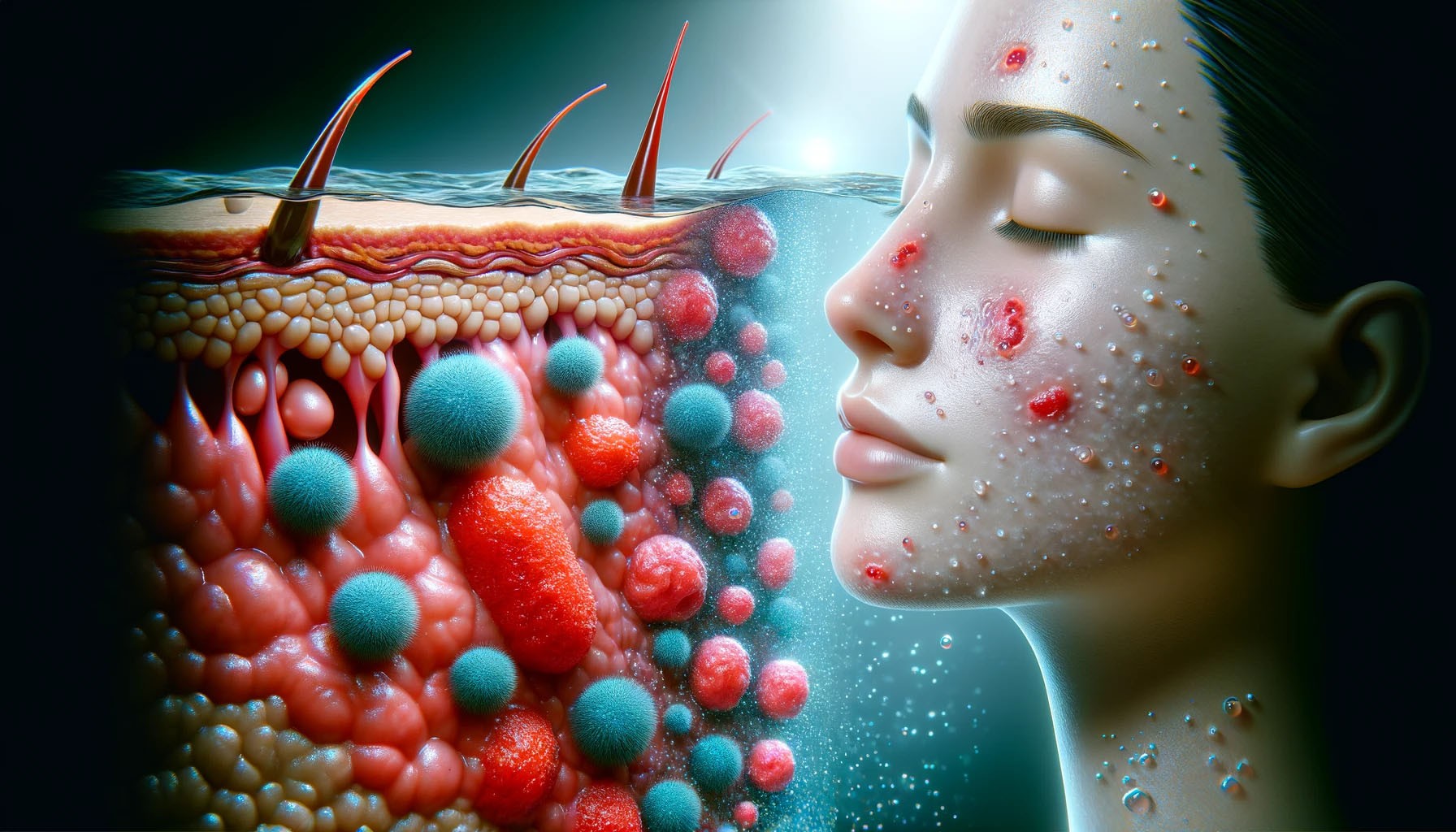Scientists Engineer Skin Bacteria for Breakthrough Acne Therapy
A recent study published in Nature Biotechnology unveils the groundbreaking success of using genetically modified skin bacteria as a potential new treatment for acne
Jan 9, 2024
AI Image Created Using DALL-E
In a groundbreaking endeavor, an international team of researchers led by the Translational Synthetic Biology Laboratory at Pompeu Fabra University's Department of Medicine and Life Sciences (MELIS) has achieved a notable feat in synthetic biology. This team, which includes scientists from the Bellvitge Biomedical Research Institute, the University of Barcelona, and several other prominent institutions, has successfully engineered Cutibacterium acnes—a skin bacterium—to produce a therapeutic molecule that holds the potential to treat acne symptoms.
Acne, a prevalent skin condition, manifests in various forms, such as whiteheads, blackheads, and more severe pustules and nodules. It's not just a teenage predicament but affects individuals of all ages, often treated with antibiotics or isotretinoin, both bearing considerable side effects. In this context, the research presents a radical departure from traditional treatments.
Published in Nature Biotechnology, the study reveals the team's success in editing the genome of Cutibacterium acnes to secrete the NGAL protein, a known mediator of isotretinoin, which reduces sebum by targeting the sebocytes—the sebum-producing cells. Nastassia Knödlseder, the study's first author, emphasizes the novelty of this approach, stating, "We have developed a topical therapy with a targeted approach, using what nature already has. We engineered a bacterium that lives in the skin and make it produce what our skin needs."
Delving into the science behind this innovation, Knödlseder explains the challenge of manipulating C. acnes, historically deemed an "intractable bacterium." The team's persistence in overcoming this hurdle has enabled them to harness the bacterium's unique position within the skin's ecosystem, particularly its proximity to sebaceous follicles, making it an ideal candidate for genetic engineering.
Under the guidance of Marc Güell, the team enhanced DNA delivery, stability, and expression within the bacterial cell, all the while adhering to strict regulatory measures to ensure safety. The result is a synthetic bacterium equipped for "real-life application" in human therapeutics.
The engineered bacteria's efficacy in modulating sebum production has been validated in cell lines and through application to mouse skin—the only current animal model for such tests. However, the team acknowledges the differences between mouse and human skin, highlighting the need for alternative models that more closely resemble human skin, like 3D skin models.
Looking ahead, Güell envisions a broader scope for this technology, stating, "We have developed a technology platform that opens the door to editing any bacteria to treat multiple diseases." The next step involves the 'SkinDev' European Project, aiming to engineer C. acnes for tackling atopic dermatitis, a chronic skin condition common in young children.
The optimism for this approach stems from the safety and efficacy already demonstrated by non-engineered C. acnes in previous patient trials, paving the way for a future where smart microbes could revolutionize the treatment of various diseases.


















